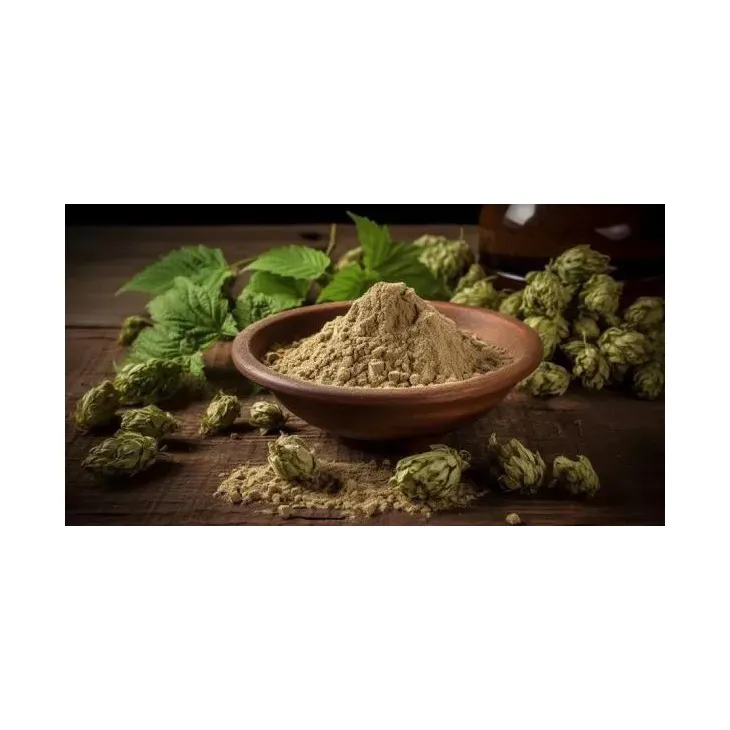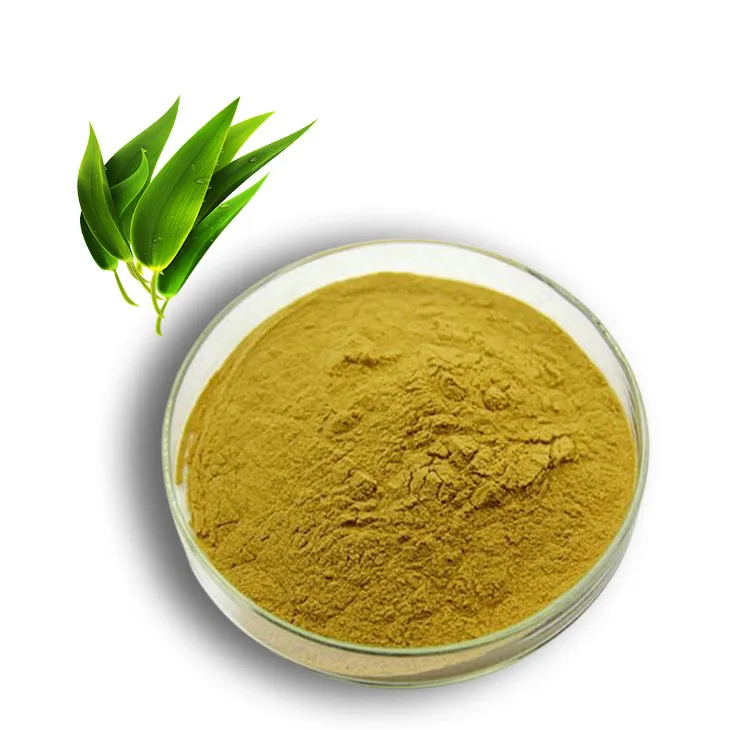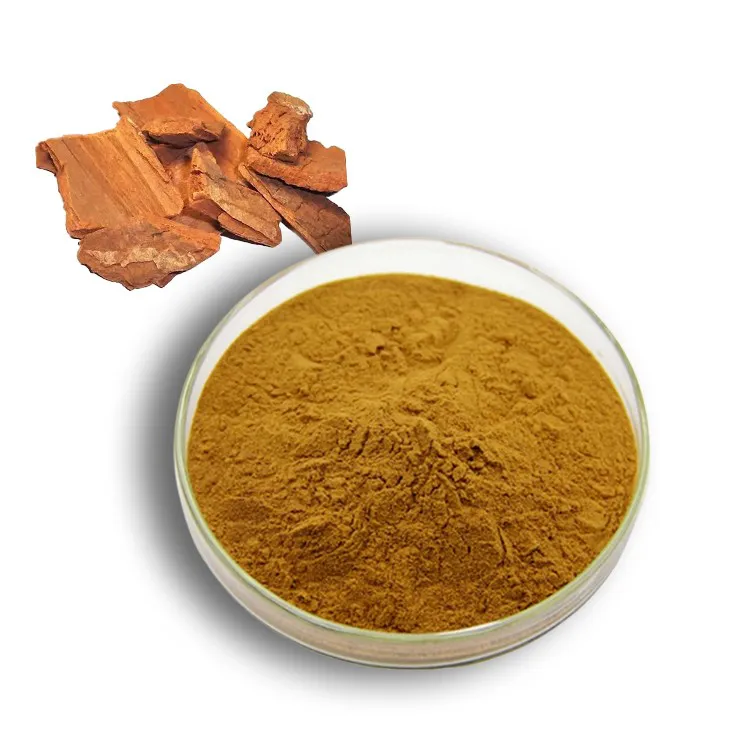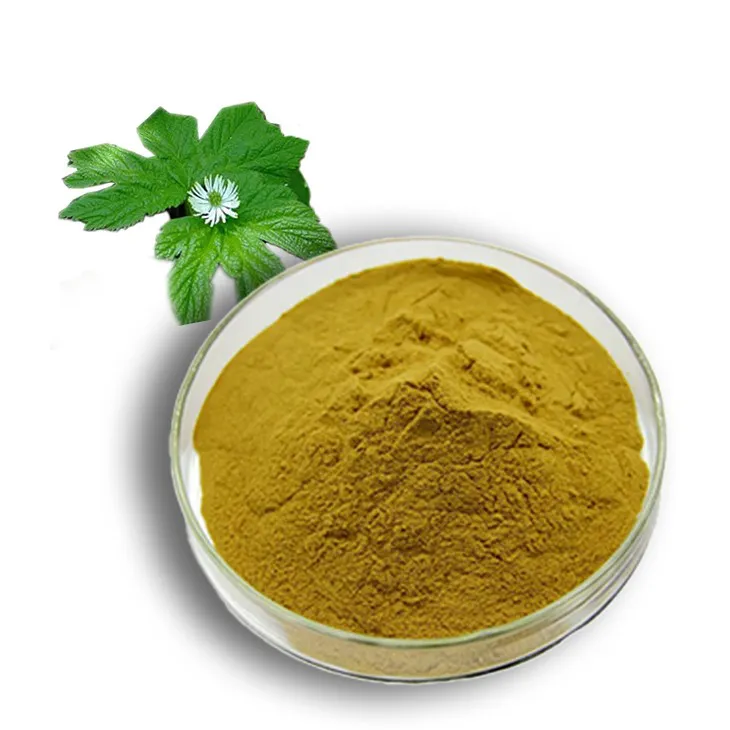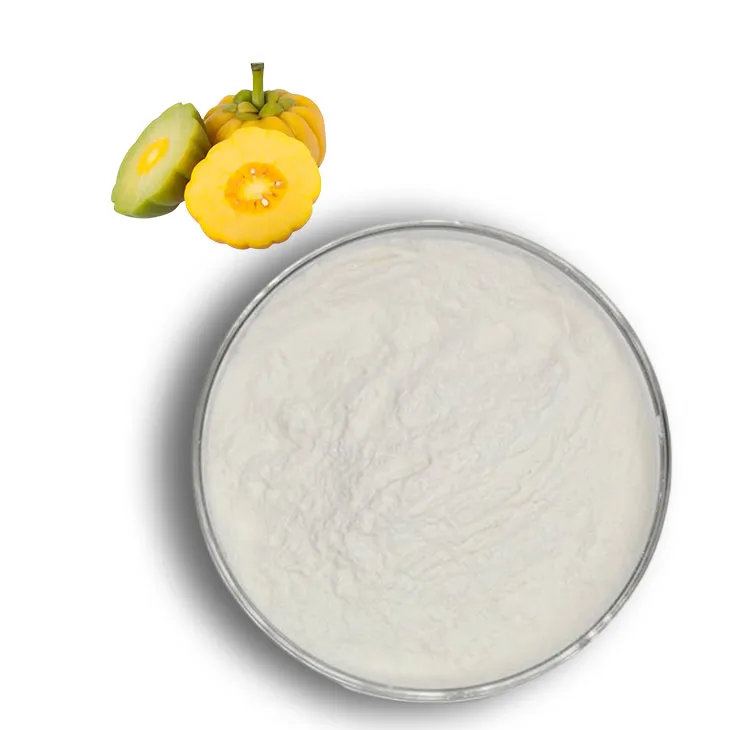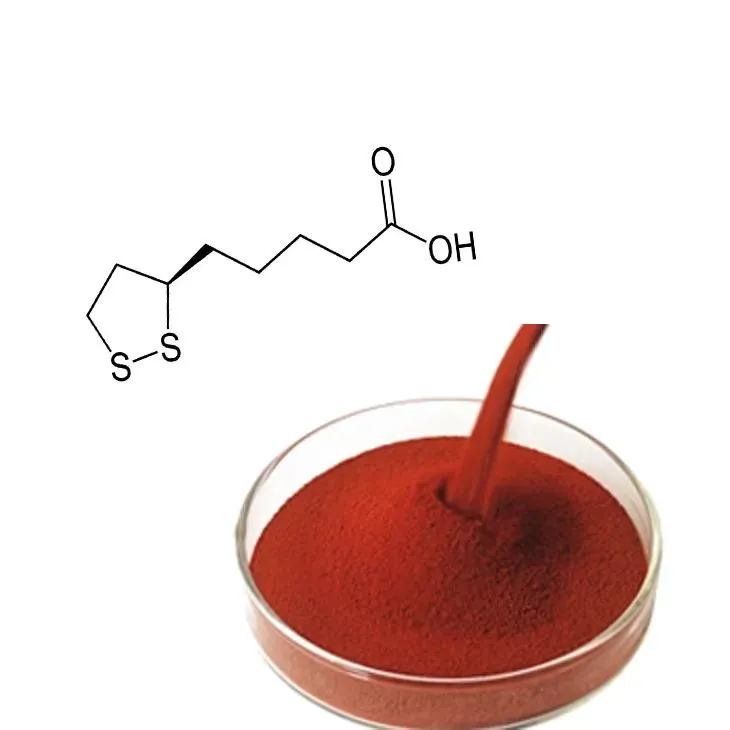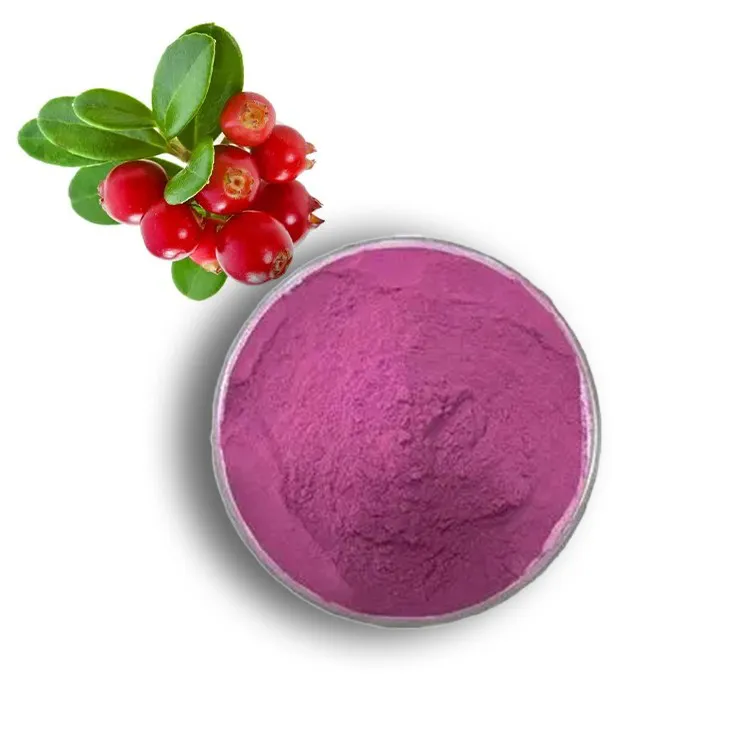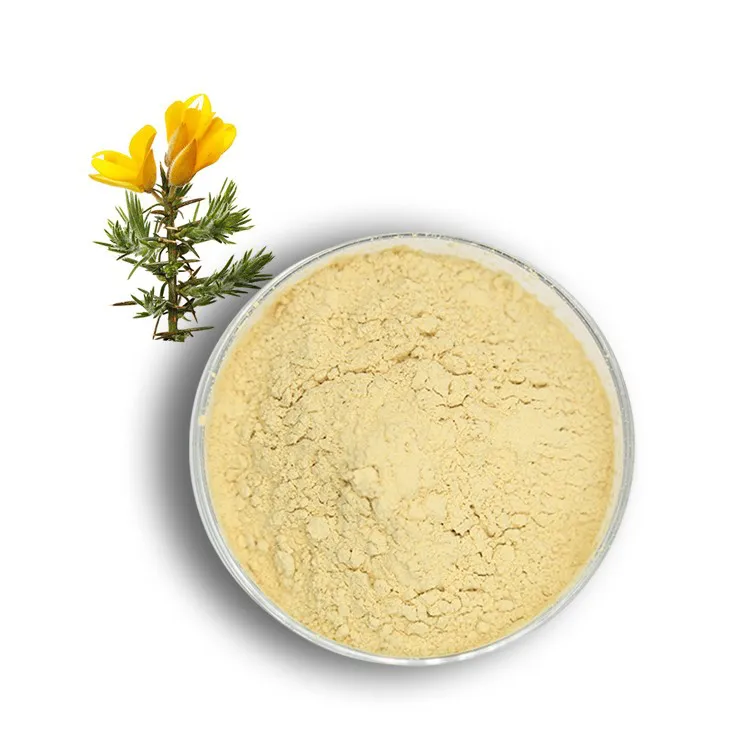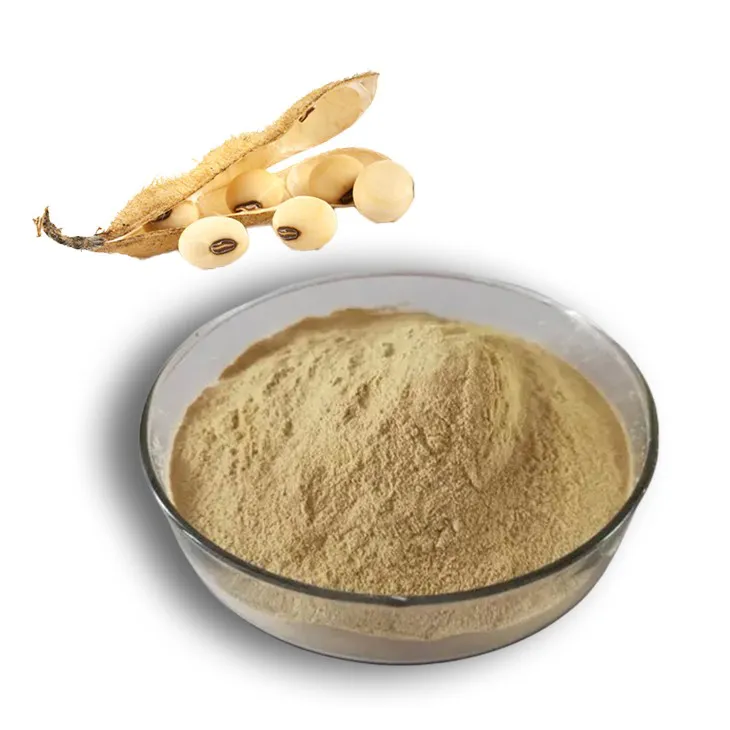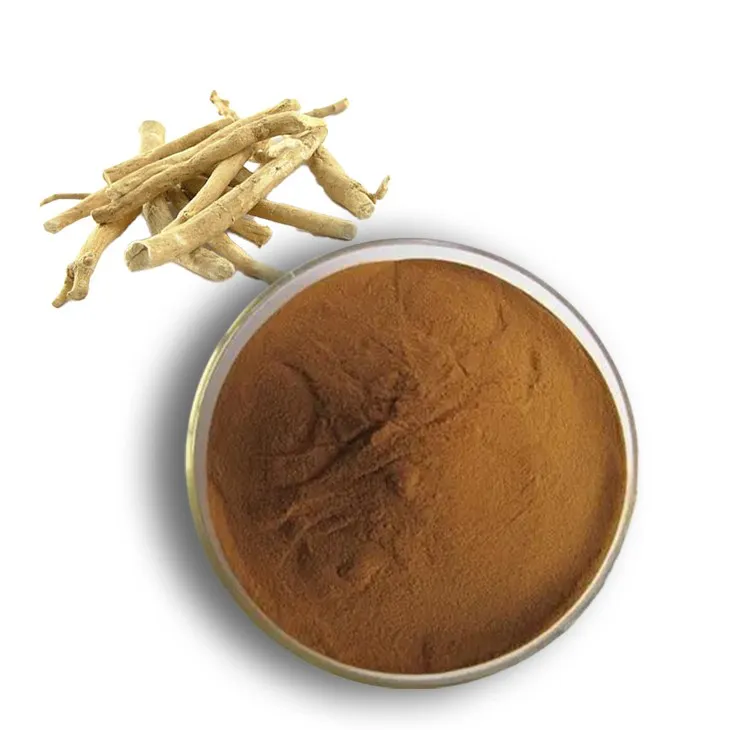- 0086-571-85302990
- sales@greenskybio.com
antioxidant activity of plant extracts
2023-09-27
1. Importance of Antioxidant Activity
1. Importance of Antioxidant Activity
Antioxidant activity is a critical aspect of modern nutrition and health, playing a pivotal role in the prevention and treatment of various diseases and conditions. Antioxidants are substances that can protect the body against the harmful effects of free radicals, which are unstable molecules that can cause cellular damage and contribute to the aging process and the development of chronic diseases.
1.1 Protection Against Oxidative Stress
Oxidative stress occurs when there is an imbalance between the production of free radicals and the body's ability to counteract or detoxify their harmful effects through neutralization by antioxidants. This imbalance can lead to damage to cellular structures, including proteins, lipids, and DNA, which can impair normal cellular functions and lead to various health issues.
1.2 Role in Disease Prevention
A diet rich in antioxidants can help reduce the risk of developing chronic diseases such as cardiovascular diseases, cancer, and neurodegenerative disorders. Antioxidants can neutralize free radicals, preventing them from causing damage to cells and tissues, and thus play a crucial role in disease prevention.
1.3 Contribution to Aging and Longevity
Antioxidants are also believed to contribute to the aging process and longevity. By reducing oxidative stress and the damage it causes, antioxidants can help slow down the aging process and promote overall health and well-being.
1.4 Enhancement of Immune Function
The immune system is responsible for defending the body against infections and diseases. Antioxidants can enhance immune function by protecting immune cells from oxidative damage, thus helping the body to fight off infections more effectively.
1.5 Preservation of Food Quality
In addition to their health benefits, antioxidants also play a significant role in the food industry. They can be used to preserve the quality of food products by preventing oxidation, which can lead to spoilage and the development of off-flavors and odors.
In summary, antioxidant activity is essential for maintaining good health and preventing various diseases. Plant extracts, which are rich sources of natural antioxidants, offer a promising avenue for harnessing the benefits of these compounds. As we delve deeper into the topic, we will explore the types of plant extracts, methods for extracting antioxidants, and the various applications of these beneficial compounds.
2. Types of Plant Extracts
2. Types of Plant Extracts
Plant extracts are derived from various parts of plants, including leaves, roots, seeds, flowers, and fruits. They are rich in a diverse range of bioactive compounds, such as phenolic compounds, flavonoids, terpenes, and carotenoids, which exhibit antioxidant properties. Here are some common types of plant extracts known for their antioxidant activity:
1. Fruit Extracts: Fruits like berries, grapes, and pomegranates are rich in antioxidants such as anthocyanins, flavonols, and carotenoids. These extracts are commonly used in the food and beverage industry for their color and health benefits.
2. Leaf Extracts: Leaves from plants like green tea and ginkgo biloba are known for their high content of polyphenols, which have potent antioxidant properties.
3. Root Extracts: Some roots, such as turmeric and ginger, contain compounds like Curcumin and gingerol, respectively, which are recognized for their antioxidant and anti-inflammatory effects.
4. Seed Extracts: Seeds from plants like flax and chia are rich in lignans and omega-3 fatty acids, which have antioxidant properties.
5. Herbal Extracts: Herbs such as rosemary, thyme, and oregano contain a variety of antioxidants, including rosmarinic acid and carvacrol, which are effective in protecting against oxidative stress.
6. Bark Extracts: Barks from trees like willow and cinnamon contain polyphenols and other compounds that exhibit antioxidant activity.
7. Flower Extracts: Flowers like chamomile and calendula are known for their antioxidant properties, which are attributed to their flavonoid content.
8. Marine Plant Extracts: Algae and seaweeds also contain antioxidants, such as fucoxanthin, which are beneficial for health and are being increasingly studied for their potential applications.
9. Mushroom Extracts: Certain types of mushrooms, like shiitake and maitake, have been found to contain antioxidants that can support immune function and overall health.
10. Spice Extracts: Spices like cloves, cinnamon, and black pepper are not only used for their flavor but also for their antioxidant properties, which can help in preserving food and promoting health.
Each type of plant extract has unique antioxidant compounds and varying levels of activity, making them suitable for different applications and health benefits. The selection of a particular plant extract for a specific purpose depends on the bioactive compounds it contains and the desired outcome.
3. Methods for Extracting Antioxidants
3. Methods for Extracting Antioxidants
The extraction of antioxidants from plant sources is a critical process that can significantly impact the yield, purity, and bioactivity of the resulting extracts. Several methods are employed in the extraction process, each with its own advantages and limitations. Here, we discuss the most common techniques used for extracting antioxidants from plant materials.
### 3.1 Solvent Extraction
Solvent extraction is one of the most widely used methods for extracting antioxidants due to its simplicity and effectiveness. It involves the use of solvents such as water, ethanol, methanol, or acetone to dissolve the bioactive compounds from plant tissues. The choice of solvent depends on the polarity of the desired compounds and the plant matrix. The solvent is typically mixed with the plant material, and the mixture is then subjected to agitation and heating to facilitate the extraction process. Afterward, the solvent is evaporated, leaving behind a concentrated extract.
### 3.2 Supercritical Fluid Extraction (SFE)
Supercritical fluid extraction utilizes supercritical fluids, most commonly carbon dioxide (CO2), which has properties between those of a liquid and a gas. At high pressures and temperatures, CO2 can penetrate plant tissues and dissolve compounds efficiently. The main advantage of SFE is that it allows for selective extraction of compounds based on their solubility in the supercritical fluid, and it does not require the use of toxic solvents. The extracted compounds can be easily separated from the supercritical fluid by reducing the pressure.
### 3.3 Ultrasound-Assisted Extraction (UAE)
Ultrasound-assisted extraction uses ultrasonic waves to disrupt plant cell walls and enhance the diffusion of antioxidants into the extraction solvent. This method is known for its high efficiency, shorter extraction time, and lower energy consumption compared to conventional methods. The ultrasonic waves create micro-turbulence and cavitation, which facilitate the release of bioactive compounds from the plant matrix.
### 3.4 Microwave-Assisted Extraction (MAE)
Microwave-assisted extraction employs microwave radiation to heat the extraction solvent, thereby increasing the temperature and accelerating the extraction process. The rapid heating provided by microwaves can improve the extraction efficiency and reduce the time required for the process. MAE is particularly useful for thermally sensitive compounds, as it allows for precise temperature control and shorter extraction times.
### 3.5 Cold Pressing
Cold pressing is a mechanical method used to extract oils and other compounds from plant materials without the application of heat. This method is particularly suitable for extracting heat-sensitive antioxidants, as it prevents the degradation of these compounds. The plant material is pressed under high pressure, and the oil is collected without the need for solvents.
### 3.6 Enzyme-Assisted Extraction
Enzyme-assisted extraction involves the use of enzymes to break down plant cell walls and release the antioxidants. This method is advantageous because it can increase the yield of bioactive compounds and reduce the need for harsh chemicals or high temperatures. Enzymes such as cellulase, pectinase, and xylanase can be used to degrade the complex plant matrix and facilitate the extraction of antioxidants.
### 3.7 Maceration
Maceration is a traditional extraction method that involves soaking the plant material in a solvent for an extended period. The solvent slowly diffuses into the plant tissue, dissolving the antioxidants. This method is simple and does not require specialized equipment, but it can be time-consuming and may result in lower extraction yields compared to other methods.
### 3.8 Conclusion
The choice of extraction method depends on various factors, including the type of plant material, the desired compounds, the scale of production, and the available resources. Each method has its own advantages and limitations, and often a combination of techniques is employed to optimize the extraction process. As research progresses, new and innovative extraction methods are being developed to improve the efficiency, selectivity, and sustainability of antioxidant extraction from plant sources.
4. In-vitro and In-vivo Assays for Antioxidant Activity
4. In-vitro and In-vivo Assays for Antioxidant Activity
Assessing the antioxidant activity of plant extracts is crucial for determining their potential health benefits and applications. There are two primary methods for evaluating antioxidant activity: in-vitro and in-vivo assays.
In-vitro Assays:
In-vitro assays are conducted outside of a living organism, typically in a laboratory setting. These tests are quick, cost-effective, and allow for the screening of numerous samples. Some common in-vitro assays include:
- Total Phenolic Content (TPC) Assay: Measures the total amount of phenolic compounds, which are known for their antioxidant properties.
- Total Flavonoid Content (TFC) Assay: Similar to TPC, but specifically quantifies flavonoids, another group of antioxidants.
- DPPH Radical Scavenging Assay: Tests the ability of a sample to neutralize the stable DPPH free radical, indicating its antioxidant capacity.
- Ferric Reducing Antioxidant Power (FRAP) Assay: Measures the ability of a sample to reduce ferric ions to ferrous ions, reflecting its reducing power.
- ORAC (Oxygen Radical Absorbance Capacity) Assay: Quantifies the antioxidant capacity by measuring the inhibition of peroxyl radicals.
In-vivo Assays:
In-vivo assays are conducted within a living organism, usually animals or humans. These tests are more complex and expensive but provide a more accurate representation of how a substance behaves in a biological system. Some common in-vivo assays include:
- Oxidative Stress Models: Animals are exposed to oxidative stressors, and the effects of plant extracts on biomarkers of oxidative stress are measured.
- Dietary Intervention Studies: Animals or humans consume plant extracts, and changes in antioxidant status and health outcomes are monitored.
- Gene Expression Analysis: The impact of plant extracts on the expression of genes related to antioxidant defense mechanisms is assessed.
Advantages and Limitations:
- In-vitro assays are advantageous due to their simplicity, reproducibility, and the ability to test multiple samples quickly. However, they may not fully represent the bioavailability and metabolism of antioxidants in a living organism.
- In-vivo assays provide a more comprehensive understanding of the biological effects of plant extracts but are limited by ethical considerations, cost, and the complexity of interpreting results.
Integration of Both Assays:
For a comprehensive evaluation of antioxidant activity, it is beneficial to use both in-vitro and in-vivo assays. In-vitro assays can be used for initial screening and to understand the basic mechanisms of action, while in-vivo assays can confirm the bioavailability and health benefits of plant extracts.
Conclusion:
The selection of appropriate assays for assessing antioxidant activity is critical for the accurate evaluation of plant extracts. A combination of in-vitro and in-vivo methods ensures a balanced approach, providing both a detailed understanding of the chemical properties and the biological effects of these extracts.
5. Examples of Plant Extracts with High Antioxidant Activity
5. Examples of Plant Extracts with High Antioxidant Activity
Plant extracts are a rich source of natural antioxidants, which are essential for maintaining health and combating the harmful effects of free radicals. Various plants have been identified for their high antioxidant activity, and their extracts are widely used in the food industry, pharmaceuticals, and cosmetics. Here are some examples of plant extracts that are known for their potent antioxidant properties:
1. Green Tea Extract:
Green tea (Camellia sinensis) is renowned for its high content of catechins, particularly epigallocatechin gallate (EGCG), which is a powerful antioxidant. It helps in reducing oxidative stress and has been linked to numerous health benefits, including improved cardiovascular health and anti-cancer properties.
2. Grape Seed Extract:
Grape seeds are a rich source of oligomeric proanthocyanidins (OPCs), which have strong antioxidant and anti-inflammatory effects. Grape seed extract is often used in skincare products for its ability to protect the skin from environmental damage and promote collagen production.
3. Turmeric Extract:
Curcumin, the active compound in turmeric (Curcuma longa), is a potent antioxidant and anti-inflammatory agent. Turmeric extract has been used traditionally in Ayurvedic medicine and has been the subject of numerous scientific studies for its potential in treating various diseases.
4. Pomegranate Extract:
Pomegranate (Punica granatum) is rich in punicalagin, a type of tannin with strong antioxidant properties. Pomegranate extract has been shown to protect against oxidative stress and support cardiovascular health.
5. Ginkgo Biloba Extract:
Ginkgo biloba is known for its flavonoid and terpene lactone content, which contribute to its antioxidant and neuroprotective effects. Ginkgo biloba extract is often used to improve cognitive function and support brain health.
6. Resveratrol from Grapes and Berries:
Resveratrol is a natural polyphenol found in the skins of grapes and various berries. It has been extensively studied for its antioxidant, anti-inflammatory, and anti-cancer properties.
7. Garlic Extract:
Allicin, the active component in garlic (Allium sativum), is a powerful antioxidant that can help reduce inflammation and oxidative stress. Garlic extract is used for its potential cardiovascular benefits and immune-boosting properties.
8. Rosemary extract:
Rosemary (Rosmarinus officinalis) contains a variety of antioxidants, including rosmarinic acid and carnosic acid, which can help protect against oxidative damage and support overall health.
9. Mangosteen Extract:
The mangosteen fruit (Garcinia mangostana) is rich in xanthones, which are potent antioxidants with anti-inflammatory and anti-cancer properties. Mangosteen extract is used for its potential to support immune function and improve skin health.
10. Bilberry Extract:
Bilberry (Vaccinium myrtillus) is known for its anthocyanins, which are powerful antioxidants that can help protect the eyes from oxidative stress and support vision health.
These plant extracts, among many others, have been extensively studied for their antioxidant activity and are increasingly being incorporated into various products to promote health and wellness. As research continues, more plant sources with high antioxidant activity are likely to be discovered and utilized for their health benefits.
6. Health Benefits of Antioxidant-Rich Plant Extracts
6. Health Benefits of Antioxidant-Rich Plant Extracts
Antioxidant-rich plant extracts offer a myriad of health benefits, making them a valuable addition to both dietary and medicinal applications. Here are some of the key health benefits associated with the consumption of these extracts:
6.1. Prevention of Oxidative Stress
Oxidative stress is a significant factor in the development of various diseases and the aging process. Antioxidants in plant extracts can neutralize free radicals, thereby reducing oxidative stress and its associated health risks.
6.2. Cardiovascular Health
Consumption of antioxidants from plant extracts can help lower the risk of cardiovascular diseases by reducing inflammation, improving blood vessel function, and lowering blood pressure.
6.3. Anti-Inflammatory Properties
Many plant extracts possess anti-inflammatory properties, which can help in reducing the symptoms of chronic inflammatory conditions such as arthritis and asthma.
6.4. Anti-Cancer Potential
Some antioxidants have been shown to inhibit the growth of cancer cells and reduce the risk of certain types of cancer, making them a valuable component in cancer prevention and treatment strategies.
6.5. Neuroprotection
Oxidative stress is implicated in neurodegenerative diseases like Alzheimer's and Parkinson's. Antioxidant-rich plant extracts can help protect neurons and reduce the risk of cognitive decline.
6.6. Skin Health
Topical application of plant extracts with high antioxidant content can protect the skin from environmental damage, reduce the signs of aging, and improve skin elasticity and hydration.
6.7. Immune System Support
Antioxidants can strengthen the immune system by protecting immune cells from oxidative damage, enhancing their function and overall immune response.
6.8. Diabetes Management
Some plant extracts with antioxidant properties have been found to help manage blood sugar levels and reduce the risk of diabetes-related complications.
6.9. Eye Health
Antioxidants can protect the eyes from age-related macular degeneration and cataracts by neutralizing the harmful effects of free radicals on the eye tissues.
6.10. Enhanced Physical Performance
Athletes and individuals engaging in regular physical activity can benefit from the consumption of antioxidant-rich plant extracts, which can reduce muscle damage and enhance recovery post-exercise.
In conclusion, the health benefits of antioxidant-rich plant extracts are vast and varied, making them an essential component of a balanced diet and a potential therapeutic agent in various health conditions. As research continues to uncover more about the specific mechanisms and benefits of these natural compounds, their role in promoting health and preventing disease is likely to become even more prominent.
7. Applications in Food Industry and Nutraceuticals
7. Applications in Food Industry and Nutraceuticals
The incorporation of plant extracts with high antioxidant activity into the food industry and nutraceutical sector has become increasingly popular due to the growing consumer demand for healthier and more natural products. Here are some of the key applications:
7.1 Enhancing Food Preservation
Antioxidant-rich plant extracts are used to extend the shelf life of various food products by preventing oxidation, which is a primary cause of food spoilage. This helps maintain the freshness, flavor, and nutritional value of the food.
7.2 Fortifying Functional Foods
Functional foods are enriched with bioactive compounds that provide health benefits beyond their basic nutritional value. Plant extracts with high antioxidant activity are often added to these products to enhance their health-promoting properties.
7.3 Developing Nutraceuticals
Nutraceuticals are products derived from food sources but are not sold as food. They are used to provide medical or health benefits, including the prevention and treatment of disease. Plant extracts with antioxidant properties are widely used in the formulation of nutraceuticals, such as dietary supplements, health drinks, and fortified foods.
7.4 Cosmetic and Personal Care Products
The antioxidant properties of plant extracts also find applications in the cosmetic and personal care industry. They are used in skincare products, hair care products, and oral care products to protect against oxidative stress and promote overall health and wellness.
7.5 Pharmaceuticals
Plant extracts with high antioxidant activity are also used in the development of pharmaceutical products. They can be used as active ingredients in drugs or as adjuvants to enhance the efficacy and safety of existing medications.
7.6 Challenges in Application
While the use of antioxidant-rich plant extracts offers numerous benefits, there are also challenges associated with their application. These include ensuring the safety and efficacy of the extracts, maintaining their stability during processing and storage, and controlling the consistency of their antioxidant activity.
7.7 Future Directions
The future of antioxidant applications in the food industry and nutraceuticals lies in the discovery of new plant sources, the development of novel extraction and delivery methods, and the integration of these extracts into innovative product formulations. Additionally, research should focus on understanding the synergistic effects of combining different plant extracts to maximize their antioxidant potential.
In conclusion, the applications of plant extracts with high antioxidant activity in the food industry and nutraceuticals are vast and offer numerous opportunities for product innovation and health promotion. However, it is crucial to address the associated challenges and continue research to harness the full potential of these natural antioxidants.
8. Challenges and Future Perspectives in Antioxidant Research
8. Challenges and Future Perspectives in Antioxidant Research
The field of antioxidant research is continuously evolving, with numerous challenges and opportunities for future exploration. Here are some of the key challenges and future perspectives in this domain:
8.1 Challenges in Antioxidant Research
1. Standardization of Methods: There is a need for standardized and universally accepted methods to measure antioxidant activity. The lack of consistency in methodologies can lead to conflicting results and conclusions.
2. Complexity of Plant Metabolism: Plants contain a wide array of compounds that can interact in complex ways. Understanding these interactions and their impact on antioxidant activity is a significant challenge.
3. Bioavailability and Bioefficacy: While many plant extracts show high antioxidant activity in vitro, their bioavailability and bioefficacy in human systems are often less clear. Research needs to focus on how these compounds are absorbed, metabolized, and exert their effects in the body.
4. Synergistic Effects: The synergistic effects of different antioxidants present in plant extracts are not well understood. More research is needed to elucidate how these compounds work together to provide health benefits.
5. Safety and Toxicity: With the increasing use of plant extracts, it is crucial to understand their safety profiles and potential for toxicity. Long-term studies are necessary to assess the safety of high-dose antioxidant consumption.
6. Economic and Environmental Impact: The large-scale production of plant extracts for commercial use can have economic and environmental implications. Sustainable and cost-effective methods of extraction and production need to be developed.
8.2 Future Perspectives in Antioxidant Research
1. Advanced Extraction Techniques: Development of novel extraction techniques, such as ultrasound-assisted extraction, microwave-assisted extraction, and supercritical fluid extraction, can improve the yield and quality of antioxidants from plant materials.
2. Personalized Nutrition: The future of antioxidant research may include personalized nutrition approaches, where dietary recommendations are tailored to an individual's genetic makeup and health status.
3. Nanotechnology: The application of nanotechnology in the delivery of antioxidants can enhance their bioavailability and targeted delivery to specific tissues or organs.
4. Systems Biology Approach: Integrating systems biology approaches can help in understanding the complex interactions between different antioxidants and their synergistic effects on health.
5. Clinical Trials: More rigorous and well-designed clinical trials are needed to establish the health benefits of specific plant extracts and their antioxidant compounds.
6. Genetic Engineering: Genetic engineering of plants to enhance their antioxidant content could be a future direction, although it comes with its own set of ethical and regulatory challenges.
7. Sustainability: Research into sustainable practices for the cultivation and extraction of plant materials is essential to minimize the environmental footprint of antioxidant production.
8. Regulatory Frameworks: The development of clear and comprehensive regulatory frameworks for the use of plant extracts in food and pharmaceutical products will be crucial to ensure safety and efficacy.
In conclusion, while the study of antioxidant activity in plant extracts has made significant strides, there is still much to learn. Addressing the challenges and embracing the future perspectives will not only advance our scientific understanding but also contribute to the development of healthier and more sustainable products for human consumption.
9. Conclusion and Recommendations
9. Conclusion and Recommendations
In conclusion, the antioxidant activity of plant extracts holds immense significance in various fields, including medicine, food preservation, and cosmetics. The natural antioxidants present in these extracts have the potential to combat oxidative stress, which is linked to a myriad of diseases and aging. The diversity of plant species offers a wide range of bioactive compounds with varying antioxidant capacities, making them a rich source for research and development.
The methods for extracting antioxidants from plants have evolved, with modern techniques such as ultrasound-assisted extraction and supercritical fluid extraction providing more efficient and eco-friendly alternatives to traditional methods. The in-vitro and in-vivo assays for determining antioxidant activity have also advanced, allowing for more accurate and reliable assessments of the efficacy of plant extracts.
Examples of plant extracts with high antioxidant activity, such as those from green tea, turmeric, and berries, demonstrate the potential benefits of incorporating these natural compounds into our diets and other applications. The health benefits of antioxidant-rich plant extracts are well-documented, including their roles in reducing inflammation, improving cardiovascular health, and potentially preventing certain types of cancer.
The applications of plant extracts in the food industry and nutraceuticals are vast, with their use in enhancing the shelf life of products, improving taste, and providing health benefits to consumers. However, challenges such as standardization, safety concerns, and the need for more comprehensive research remain.
Looking to the future, there is a need for continued research to explore the full potential of plant extracts as sources of antioxidants. This includes identifying new plant species with high antioxidant activity, developing more efficient extraction methods, and conducting more extensive studies on the health benefits and potential side effects of these compounds.
Recommendations for future research include:
1. Further Exploration of Plant Species: Expand the search for plants with high antioxidant activity, particularly those that are underutilized or have not been extensively studied.
2. Development of Novel Extraction Techniques: Invest in the development of new extraction methods that are more efficient, sustainable, and cost-effective.
3. Safety and Toxicity Studies: Conduct comprehensive safety and toxicity studies to ensure the safe use of plant extracts in various applications.
4. Clinical Trials: Encourage more clinical trials to validate the health benefits of plant extracts and to understand their mechanisms of action.
5. Standardization and Quality Control: Establish standardized methods for the extraction and quality control of plant extracts to ensure consistency and reliability.
6. Education and Awareness: Increase public awareness about the benefits of antioxidants and the importance of incorporating antioxidant-rich plant extracts into daily diets.
7. Collaboration: Foster collaboration between researchers, industry, and regulatory bodies to facilitate the development and application of plant extracts in various sectors.
8. Sustainability: Ensure that the extraction and use of plant extracts are sustainable and do not harm the environment or contribute to the overexploitation of plant resources.
By following these recommendations, we can harness the full potential of plant extracts as sources of antioxidants, contributing to improved health, food preservation, and the development of novel products in the nutraceutical industry.
- ▶ Hesperidin
- ▶ Citrus Bioflavonoids
- ▶ Plant Extract
- ▶ lycopene
- ▶ Diosmin
- ▶ Grape seed extract
- ▶ Sea buckthorn Juice Powder
- ▶ Fruit Juice Powder
- ▶ Hops Extract
- ▶ Artichoke Extract
- ▶ Mushroom extract
- ▶ Astaxanthin
- ▶ Green Tea Extract
- ▶ Curcumin
- ▶ Horse Chestnut Extract
- ▶ Other Product
- ▶ Boswellia Serrata Extract
- ▶ Resveratrol
- ▶ Marigold Extract
- ▶ Grape Leaf Extract
- ▶ New Product
- ▶ Aminolevulinic acid
- ▶ Cranberry Extract
- ▶ Red Yeast Rice
- ▶ Red Wine Extract
-
Uridine-5'-monophosphate Disodium salt
2023-09-27
-
Bamboo Leaf extract
2023-09-27
-
Yohimbine Bark Extract
2023-09-27
-
Golden Seal Extract
2023-09-27
-
Garcinia Cambogia Extract
2023-09-27
-
Astaxanthin
2023-09-27
-
Europen Bilberry Extract
2023-09-27
-
Genistein
2023-09-27
-
Soy Extract
2023-09-27
-
Withania Somnifera Extract
2023-09-27











